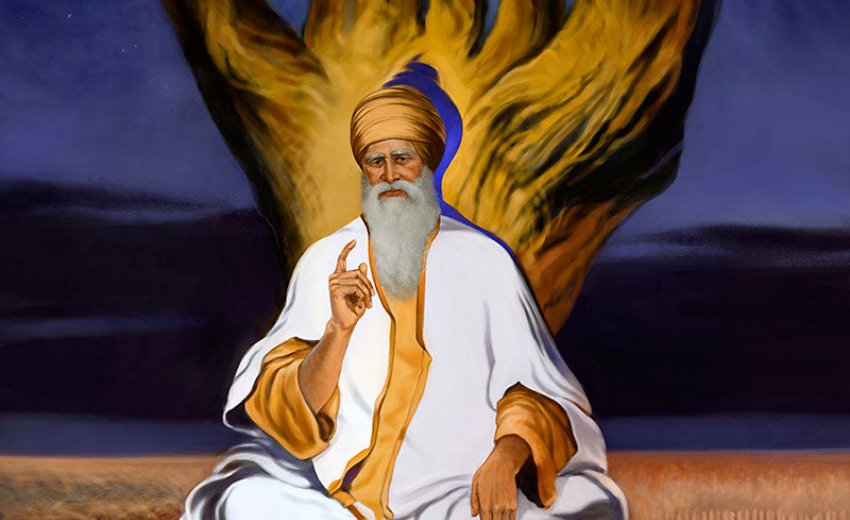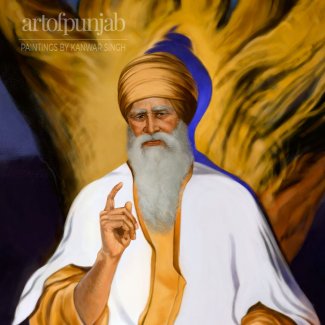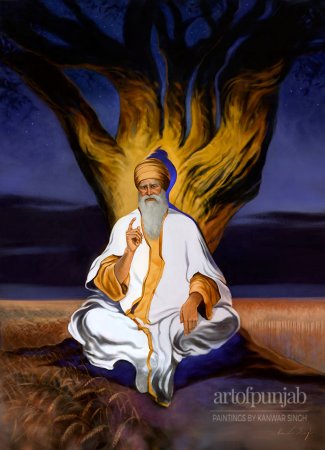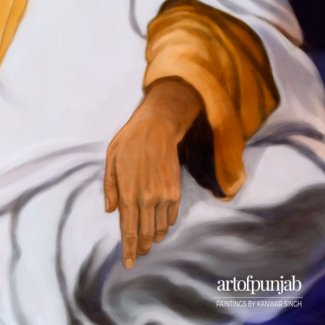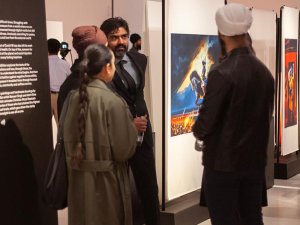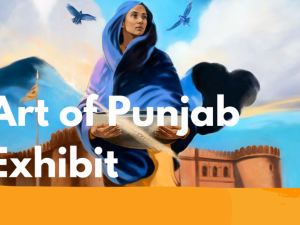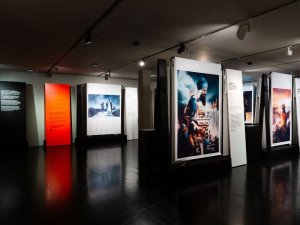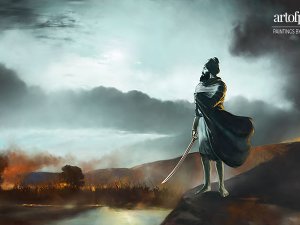This painting of Guru Nanak at Kartarpur is an artistic attempt to express the divine light manifested by Guru ji in his old age when he attracted many followers to sit alongside him in the wheat fields of Kartarpur. Looking upon it, we dwell upon the last days
of Guru ji on this earth as he planted the core tenants of Sikhism in the hearts of the community of the faithful who gathered about him. He casts a royal blue shadow, which takes the shape of a warrior wearing a dastaar and Kalgi. This foreshadows the transformation of his jyot into Guru Gobind Singh ji who would create the Khalsa panth, born out of the soil of Punjab from the seeds Guru Nanak planted generations before. To the left of Guru Nanak, we see the field of golden wheat but to the right it subtly transforms into a field of arrows and fire. This is an analogy for the turbulent and transformative times ahead for the land of Punjab, hardships which would engender the spiritual and bodily transformation of the Sikh community into the Khalsa panth. The tree is a metaphor for the Sikh community; it grows from the body of the Gurus into five powerful trunks (the panj pyare) and then beyond into countless more spirit born souls, stretching into the eternity of boundless time and the infinite cosmos.
An exerpt from the writing of the great professor Puran Singh: Nanak and His Wheat Farms at Kartarpur
Guru Nanak started wheat farms at Kartarpur, the town of Kartar (Creator) as he called it. His people came and worked with him in the fields. The Guru took keen delight in sowing wheat, and reaping the golden harvests: he was of the people. Once again his stores were open to them. The bread and water were ready for all at all hours of the day, and crowds came and freely partook of the guru’s gifts. All comers were filled from the Guru’s treasury of thought and love and power; the diseased and distressed were healed by him. He was an old man then; and he loved to see the crowds of God’s disciples coming from the distant Kabul and Central Asia and Assam and Southern India - all the places where he had been in his younger days. In the trackless world of that time, the old Father of his people travelled on foot, singing his Hymns of Nam, and gathering every trace of love.
The Afghan and the Biloch, the Turk and the Tartar, the Sufi and the Brahman, the white and dark races, mingled in his great heart. The disciples, both men and women, came from all directions, and took part freely in the song of the Guru. So great was the reverence of his own country for him, that Pir Bahauddin, the great Sufi teacher who counted his followers by thousands, one morning suddenly turned his back on Qaaba (which no Moslem would do), and began bowing, in his Namaz, in the direction of Kartarpur, “Why so?” cried his faithful followers, in alarm. “This morning I see the light of God in this direction, my friends!” said he.

